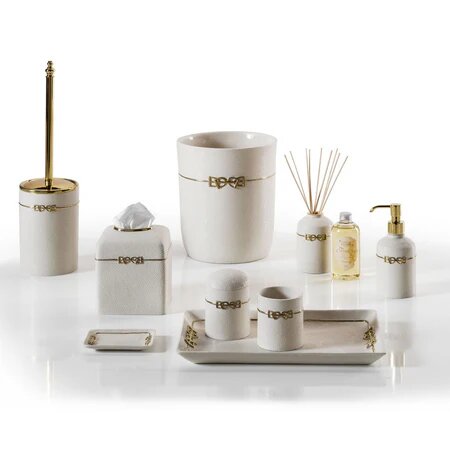Villari: the Pop luxury of white gold
With products exported to all four corners of the earth, the Veneto-based company is unafraid of reinventing the codes of porcelain. Without neglecting the taste for classic pieces, whilst also blending the contemporary with the craftsmanship of its designers
Many stories of Italian industry are similar, but every story is special in its own particular way. Villari, one of the leading representatives of Italy’s artistic porcelain production, is a jewel in the crown for its classic style, exported to all four corners of the earth. The spark driving this Veneto-based company was triggered during the boom years, when Italy started building a system of economic growth, manufacturing innovation and changing aesthetic codes. Mr and Mrs Villari exemplify this path of life and work: in 1967, Silvia and Cesare left their jobs as skilled workers to set up their eponymous company in Solagna, 70 km from Venice. They met working in the same porcelain factory in the Province of Vicenza, and together took a leap of faith to start up their own business venture, with a unique voice and approach to research.
During its early years, Villari focused on a specific genre: Capodimonte porcelain, developed in Naples in the 18th century under the aegis of Charles of Bourbon. Cesare, the factory’s fabulator of figuration and forms, tender of the archives and the final arbiter of the quality of the pieces produced, began to make small porcelain sculptures depicting people, animals and flowers. Richly decorated and hand-painted, the figurines boast an abundance of ornamentation and make decorative richness a feature that cannot fail to appeal to foreign markets. The same attention to detail also applies to tableware, such as plates, vases and tea sets, as well as to chandeliers, bowls and centrepieces, all testament to the same manual care, the same patient work. Some stylistic features, such as flowers and butterflies, became established as real distinctive hallmarks on pieces that are still to be found today in one of the temples to classic accessories, the Harrods department store in London, as well as in Villari's 30 single-brand stores around the world. The canons of the Baroque, Neapolitan and Italian, were followed by an exploration of other styles, such as neoclassical or French Empire, as in the Grande Impero collection, all bearing the same "alla Villari" stamp.
Leave a Reply
No comments
VILLARI Online Store © 2026



